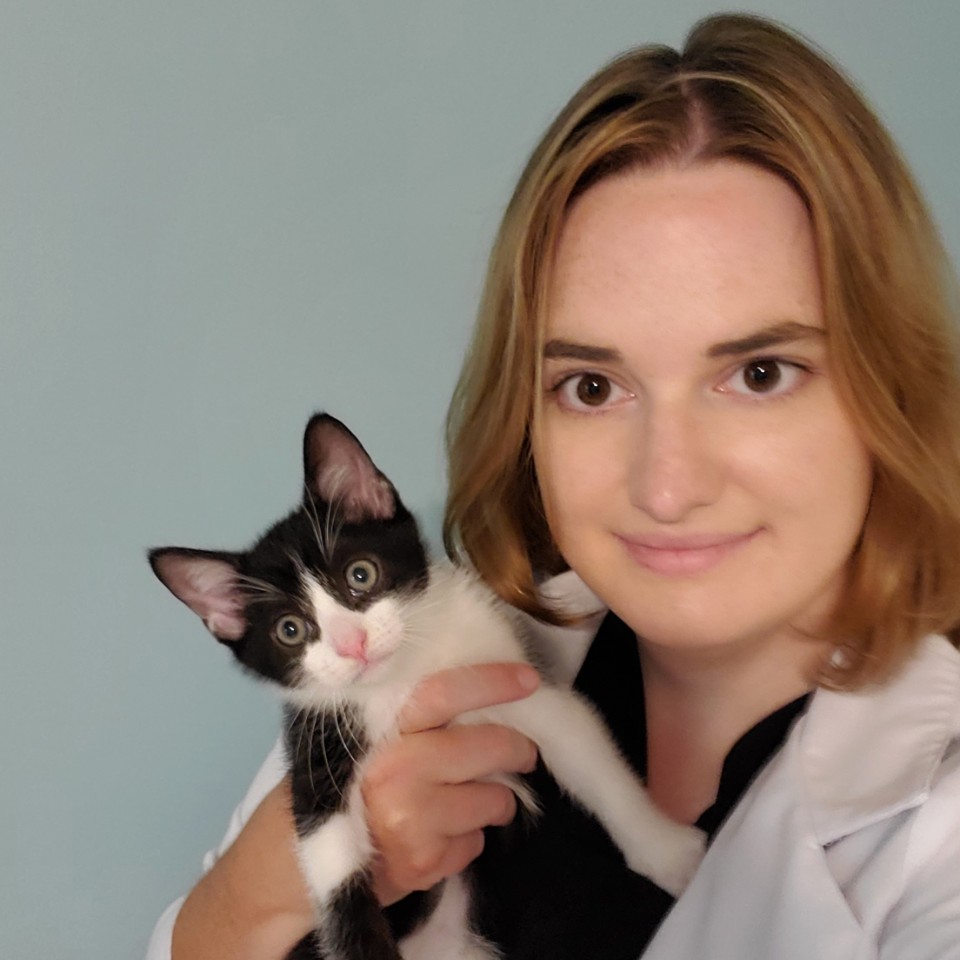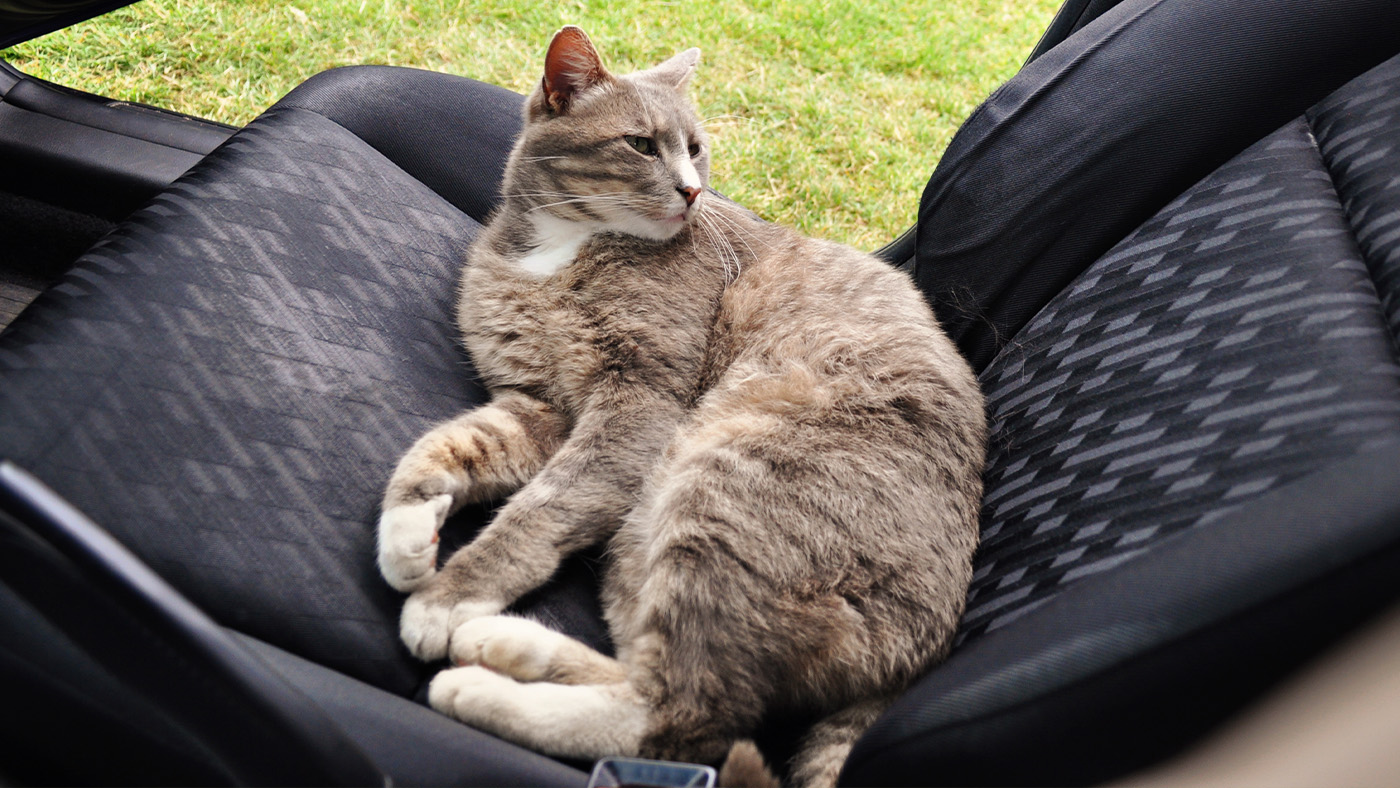Giardia in dogs: Vet's guide to signs, treatment and prevention
A common parasite, giardia in dogs often has no symptoms at all - but it can spread in the feces of infected animals
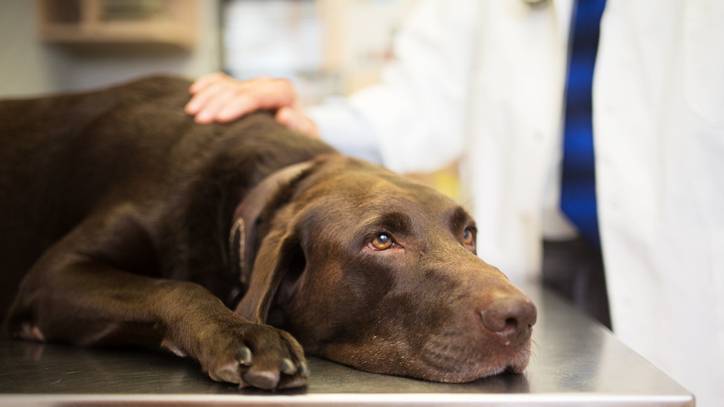
Giardia is a highly prevalent protozoan parasite in dogs, and is particularly common in areas where dogs congregate such as shelters, kennels, and dog parks.
Dogs with giardia infection often have no symptoms, but those that do become symptomatic may exhibit diarrhea, occasionally accompanied by lethargy or abdominal pain.
If your dog has been diagnosed with a giardia infection, it is important to know that this infection can be transmitted to other dogs, and your dog can even re-infect himself if you’re not careful to prevent it.
Learn all about giardia in dogs below so you can ensure your dog is protected from this common parasite.
What is giardiasis in dogs?
Giardia is a protozoan parasite that infects the gastrointestinal tract of many mammals, including dogs and humans. Giardia infection is common in dogs, particularly those in high-density environments such as kennels and shelters. Giardia can be found in soil, water, and even food that has been contaminated with infected feces.
When an animal is infected with giardia, it sheds giardia cysts through its feces. These infective cysts are then ingested by another animal. Once in the digestive tract, the cysts open and release two trophozoites, which mature in the digestive tract.
Some trophozoites attach the the wall of the small intestine, while others remain free-moving in the digestive tract. The trophozoites multiply, and new immature trophozoites are encysted and released in the feces, ready to infect a new host.
How is giardia spread? Can it spread to humans?
Giardia is spread by the ingestion of giardia cysts, which are shed in the feces of infected humans and animals. Cysts are typically ingested from contaminated water, food, fomites (such as food or water bowls, toys, etc), or from self-grooming.
This means that dogs can contract giardia from eating infected feces, drinking contaminated water, or even from licking their paws after walking in areas where infected animals have defecated.
Dogs in shelters, breeding facilities, and kennels are more likely to carry giardia. Studies have also found that giardia is more prevalent among dogs that visit dog parks.
Giardia is a zoonotic disease, which means it can be spread from animals to humans. However, humans typically acquire giardia infections from other humans. According to the Companion Animal Parasite Council (CAPC), transmission from dogs to humans appears to be rare.
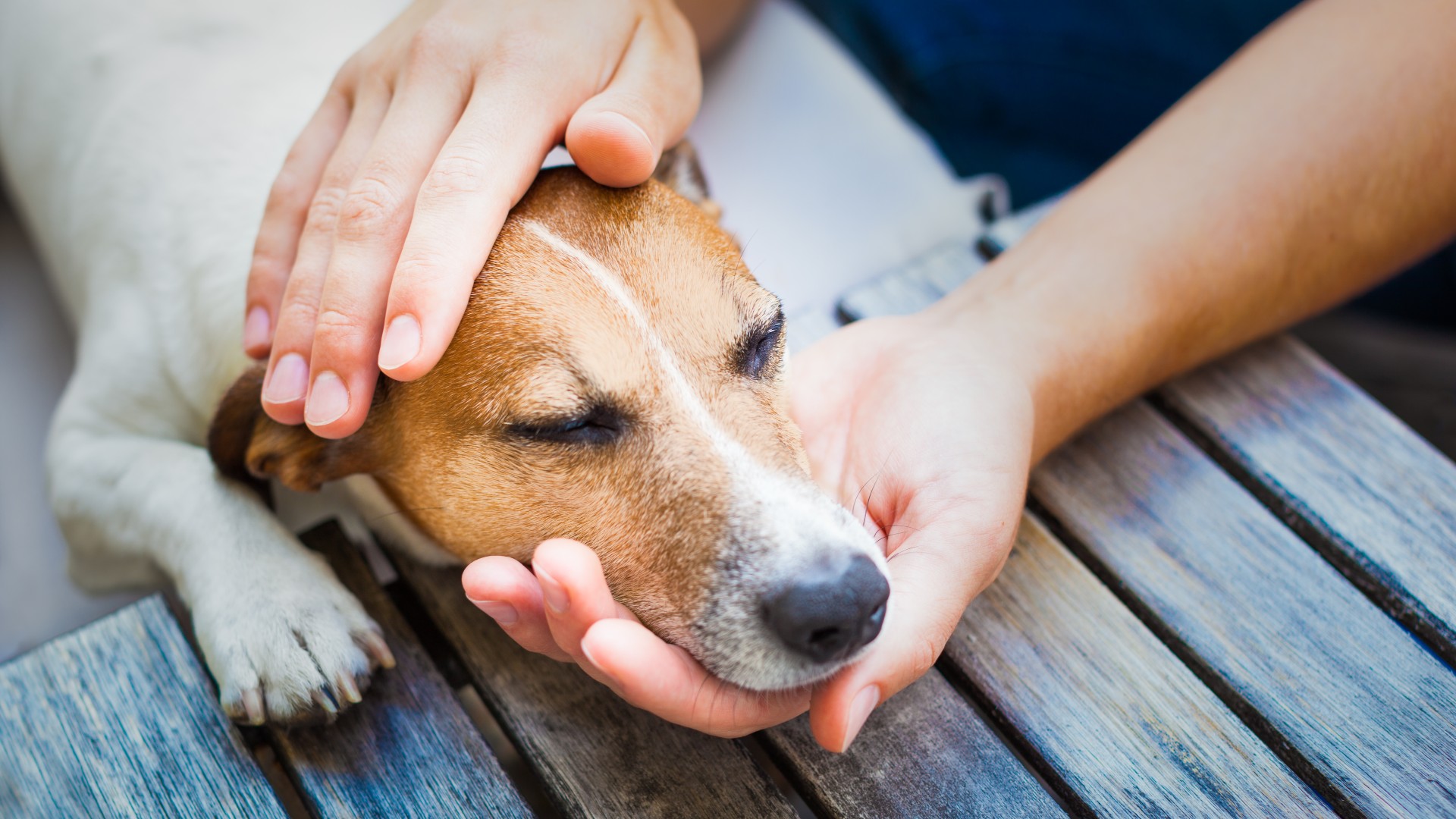
Symptoms of giardia in dogs
Many dogs with giardia are asymptomatic, meaning they do not show any signs of the disease. Those that do show symptoms typically have an acute (sudden onset) diarrhea.
Often there is an increased frequency in defecation as well. The diarrhea may have mucus but is typically not bloody except in very severe cases. Dehydration, lethargy, and abdominal pain can also occur in severe cases.
Rarely, vomiting and fever may occur. Younger animals are more likely to experience severe infections than older animals. If you notice symptoms of giardia in your dog, see your veterinarian for appropriate diagnosis and treatment.
Your veterinarian will perform a full head to tail physical examination, and will likely recommend an evaluation of a fecal sample to look for giardia cysts or a test for giardia antigen, which confirms infection.
Treating giardia in dogs
Giardia should always be treated, even if your dog does not have symptoms, because of the risk of transmission to other animals and possibly to humans as well. Giardia is typically treated with an antiparasitic medication called Fenbendazole.
Sometimes Fenbendazole is given in combination with an antibiotic called Metronidazole, which can be particularly helpful in cases of clinical disease.
The Companion Animal Parasite Council also recommends bathing the dog with shampoo on the last day of treatment to remove cysts and fecal material from the coat and paws, which will help prevent re-infection.
Following treatment, it is recommended to retest a fecal sample for giardia cysts to ensure that the infection has be adequately treated.
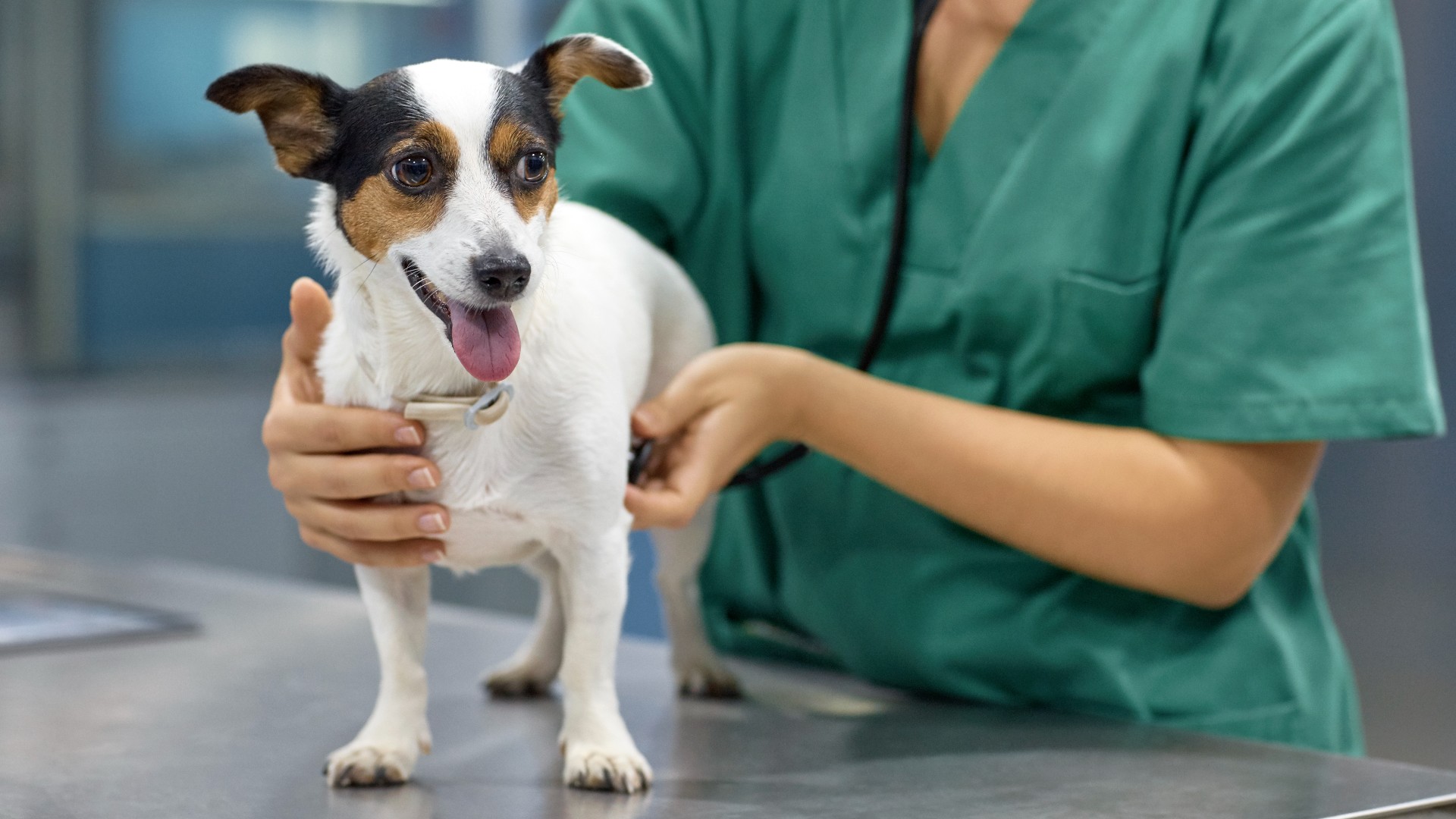
Can dogs with giardia be around other dogs?
Giardia is not transmitted directly from dog to dog, so dogs with giardia can be around other dogs. However, other dogs should not be walked or allowed to play in areas where an infected dog has defecated, because giardia is transmitted through the feces.
To prevent giardia from being transmitted to other dogs, always pick up your dog’s poop immediately after your dog defecates and dispose of it in an appropriate waste container.
If your dog has giardia, walking your dog in a separate area away from other dogs and practicing good sanitation by picking up and disposing of your dog’s feces immediately will help prevent transmission of giardia to other dogs.
How to prevent giardia in dogs
Giardia is transmitted via the fecal-oral route, so good hygiene is essential to prevent giardia in dogs. Dogs should not be allowed to drink from contaminated water sources and should be kept away from areas where other animals have defecated.
Feces should be picked up promptly after dogs have defecated and should be disposed of in appropriate waste containers. Infected dogs should also be bathed to remove giardia cysts from the coat and paws, where normal self-grooming behavior can cause them to be ingested, leading to re-infection.
Giardia cysts are able to live in the environment outside the host for several months. However, they are susceptible to most common disinfectants as well as to boiling, steam, and desiccation.
Surfaces, food and water bowls, toys, and other materials used by an infected dog should be cleaned thoroughly to reduce the risk of transmission, particularly in kennel or shelter environments where transmission risk is high.
Items contaminated with fecal material should first be washed to removal all organic matter, then disinfected according to the manufacturer’s instructions.
PetsRadar Newsletter
Get the best advice, tips and top tech for your beloved Pets
Dr. Elizabeth Racine is a small animal general practice vet covering all things pet health and wellness. Her special interests include veterinary behavior, nutrition, and internal medicine.
As a freelance writer, Dr. Racine has written content for major companies in the industry such as the American Kennel Club, Merck Animal Health, Bayer PetBasics, Elanco, and CareCredit. In her free time, Dr. Racine enjoys playing trampoline dodgeball, hiking with her beagle Dasher, and spending time with her three mischievous cats.
